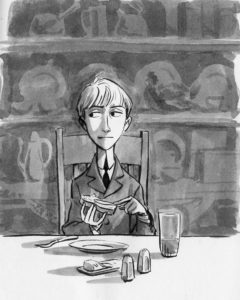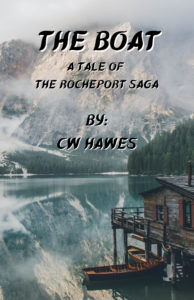After talking with a friend who is having some well-deserved success on Vella, I’ve decided to give the platform a try.
After all, who doesn’t like success when it comes not only in the form of folks saying they love what you’re doing, but also in the form of checks to the bank account?
What is Kindle Vella?
Vella is a way for writers to share stories with readers — one episode at a time. It’s like TV for fiction.
Or if we go way back, serializing a novel was basically how most long popular fiction was first published up until the 1960s.
Back in the 1800s, newspapers and magazines published poetry, short stories, and novels (in the form of serials, one episode at a time).
During the heyday of the pulp magazines, many magazines serialized novels. Most of which were never published in paperback or hardback.
Vella is today’s recreation of a time-honored method of publishing fiction.
Vella exists as an app for your phone and tablet, and also as a website (which is how I use Vella).
How Does Vella Work?
Vella is a platform for you to read serialized fiction. The first 3 episodes are free to read.
Think of this as Amazon’s “Look Inside” feature. The free episodes help you decide if you like the story enough to spend money reading the rest of it.
If you like what you see, you can unlock the further episodes by buying tokens and then using the required amount of tokens to unlock the additional episodes.
Episode length determines how many tokens you need to spend to read that portion of the story.
Why Vella?
More and more people are consuming content, both entertainment and informational, on their phones.
Many people find it difficult to engage with and commit to a full-length novel. The size alone of some of these books is daunting.
After all, we’re busy. And when you’re time deprived, looking at a 500 page novel just might be a commitment you don’t want to take on.
I think this is one reason why audiobooks have taken off. One can listen to an audiobook while doing something else.
In fact, my step-daughter has said this very thing: she doesn’t have time to sit down and read a novel. But she loves stories. So instead of reading, she listens to audiobooks while cooking, or driving to work, or riding her bike.
But audiobooks aren’t for everyone. I don’t particularly care for them myself. Often the narrator is not at all good, and that results in a less than optimal experience.
Vella takes a different approach. An old approach and makes it new.
Vella allows readers to read short bites of text. Instead of staring at the whole pan of lasagna, you are only looking at one short, exciting scene or chapter. One little mouthful.
This makes Vella perfect for reading on coffee break or on the commute, or even when you’re in the bathroom.
Join Me On Vella
I’m giving Vella a try. When I was a working stiff, reading was sometimes a chore. The book never seemed to end.
But with episodes no longer than 5,000 words, it’s easy to get in your reading fix at least once a day. And maybe more.
Tales Macabre and Arabesque is my first foray into the world of Vella.
The first 3 (free) episodes will go up the 28th, 29th, and 30th of October. That’s this weekend. On Monday (Halloween), the first locked episode will be available for you to unlock. And a new episode will appear each Monday thereafter for 13 weeks.
Tales Macabre and Arabesque is a collection of 15 short stories. Some of the stories are bizarre. Some, uncanny. Others, unsettling. A few are weird. And a number qualify as dark humor.
Fifteen tales, divided into 17 episodes, that will take you to worlds you never knew existed and inside the minds of some you perhaps don’t want to see.
Join me. Here’s the link: https://www.amazon.com/kindle-vella/story/B0BK7N75BJ
See you there!
Comments are always welcome! And until next time, happy reading!
 CW Hawes is a playwright, award-winning poet, and a fictioneer, with a bestselling novel. He’s also an armchair philosopher, political theorist, social commentator, and traveler. He loves a good cup of tea and agrees that everything’s better with pizza.
CW Hawes is a playwright, award-winning poet, and a fictioneer, with a bestselling novel. He’s also an armchair philosopher, political theorist, social commentator, and traveler. He loves a good cup of tea and agrees that everything’s better with pizza.
If you enjoyed this post, please consider buying me a cup of tea. Thanks! PayPal.me/CWHawes
Share This!



